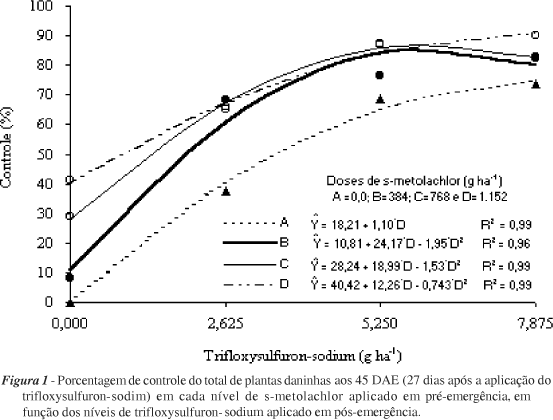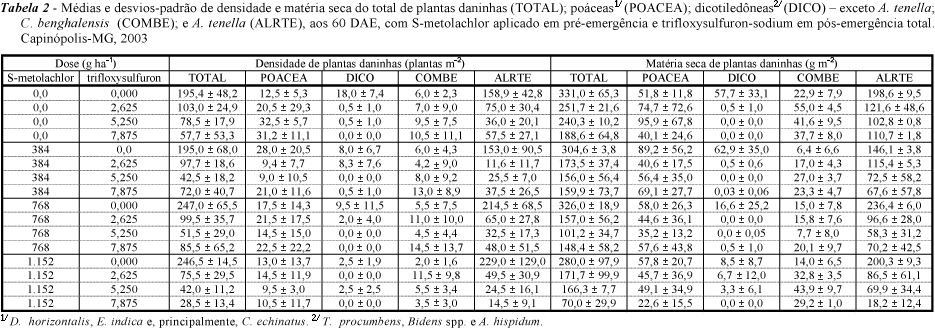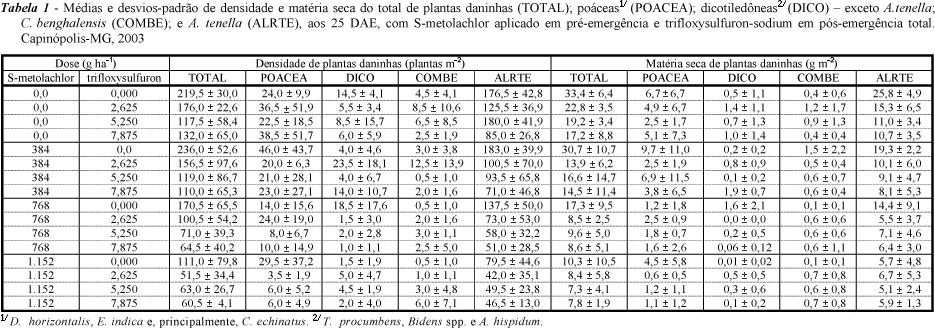The objective of this study was to evaluate the efficiency of the herbicides Smetolachlor in pre-emergence and trifloxysulfuron-sodium applied 18 days after crop emergence (DAE), under no-tillage systems. A factorial scheme (4 x 4) + 1 was used in a completely randomized block design, with four replications. The first factor consisted of four S-metolachlor doses (0, 384, 768 and 1.152 g ha-1) and the second of four trifloxysulfuron-sodium doses (0.0; 2.625; 5.250; and 7.875 g ha-1), plus a control kept weeded throughout the cotton cycle. The weeds were evaluated 25, 45 and 60 DAE. The following weed species were present in the area: Alternanthera tenella, representing over 80% of the total, Bidens spp., Tridax procumbens, Acanthospermum hispidum, Ipomoea grandifolia, Digitaria horizontalis, Eleusine indica, and Commelina benghalensis. S-metolachlor controlled these species with low efficiency. The best control was obtained with the combination of S-metolachlor at 1.152 g ha-1 with trifloxysulfuron-sodium at 7.875 g ha-1, which controlled more than 90% of A. tenella and other dicotyledonous weeds until 60 DAE. This control was still not sufficient to clear the ground for the cotton harvest. The combinations S-metolachlor at 384 and 768 g ha¹ with trifloxysufuron-sodium at 7.875 g ha-1 and S-metolachlor at 1.152 g ha-1 with trifloxysulfuron-sodium in the doses 5.250 and 7.875 g ha-1 provided similar yields for the weeded control.
S-metolachlor; triflosysulfuron-sodium; Gossypium hirsutum; selectivity





